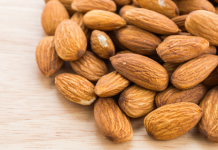Pomôže vám cvičenie naozaj schudnúť?
Možno by vás to pri čítaní prvých riadkov tohto článku prekvapilo, ale toto už pravdepodobne pre vás tak “šokujúce” nebude.
Pravdou totiž je, že vplyv cvičenia na chudnutie či priberanie hmotnosti sa môže líšiť človek od človeka (43).
Hoci väčšina ľudí, ktorí cvičia budú z dlhodobého hľadiska úspešne chudnúť, u niektorých môže váha zostať na rovnakej úrovni alebo sa v niektorých prípadoch ešte dokonca zvýšiť (44).
Pravdou však je, že u týchto ľudí došlo k zvýšeniu hmotnosti hlavne vďaka nabratiu svalovej hmoty.
Jednoducho, keď porovnáte stravovanie a cvičenie, zmena stravovacieho režimu môže byť pre vaše chudnutie omnoho efektívnejšia ako cvičenie (45,46).
Avšak najviac efektívnou stratégiou stále zostáva kombinácia stravovania a cvičenia (47).
Vplyv cvičenia na ľudské telo sa môže veľmi individuálne líšiť. Niektorí ľudia úspešne schudnú, ďalší si svoju hmotnosť udržia a niektorí dokonca ešte priberú.
Ľudia, ktorí schudnú a svoju novú hmotnosť si aj udržia, veľmi veľa cvičia
Mnoho ľudí zabúda na to, že udržanie schudnutých kilogramov je náročné.
V skutočnosti niektoré štúdie ukazujú, že 85% ľudí, ktorí schudli nie sú schopní si svoju novú hmotnosť udržať (48).
Hlavným dôvodom je, že oni jednoducho neboli vzdelaní v tom, aby si svoju novú hmotnosť úspešne udržali natrvalo.
Je to aj váš problém?
Potom to môžete veľmi jednoducho napraviť, vďaka našej Kaki online kuchárke.
Štúdie u ľudí, ktorí schudli veľké množstvo kilogramov a svoju novú hmotnosť si následne aj úspešne udržali niekoľko rokov, ukázali, že títo ľudia mali tendenciu cvičiť až jednu hodinu denne.
Pri výbere pohybovej aktivity je najlepšou voľbou možnosť pohybu, ktorý vás bude baviť a ktorý dokážete ľahko zaradiť do vášho životného štýlu. Potom máte veľmi veľkú šancu, že si svoju novú hmotnosť aj dlhodobo udržíte.
Myslite teda na to, že ľudia ktorí úspešne schudli a dokázali svoju hmotnosť taktiež aj dlhodobo udržať, cvičili až jednu hodinu denne.
Čo by ste si mali z tohto článku odniesť?
V tomto článku ste sa mohli dozvedieť, že ani rada “začni sa hýbať a schudneš” nemusí platiť úplne pre každého.
Každý z nás je naozaj jedinečná bytosť s jedinečným telom a preto “zaručené rady” nemusia vždy fungovať aj u každého.
Preto je dôležité myslieť na to, že pohyb je skvelý pre zdravie a chudnutie, ale ešte dôležitejší je správny stravovací režim.
Preto nezanedbávajte svoje stravovanie, aby ste zbytočne nezničili svoju veľkú drinu a námahu nesprávnymi stravovacími návykmi.
V prípade, že potrebujete poradiť s vaším stravovacím režimom alebo hľadáte odbornú pomoc, napíšte mi priamo na môj Facebook.
© Tomáš Hadžega
-
Hills, A. P., Street, S. J., & Byrne, N. M. (2015). Physical activity and health:“what is old is new again”. In Advances in food and nutrition research(Vol. 75, pp. 77-95). Academic Press.
-
Booth, F. W., Roberts, C. K., & Laye, M. J. (2012). Lack of exercise is a major cause of chronic diseases. Comprehensive Physiology, 2(2), 1143.
-
Lavie, C. J., Arena, R., Swift, D. L., Johannsen, N. M., Sui, X., Lee, D. C., … & Blair, S. N. (2015). Exercise and the cardiovascular system: clinical science and cardiovascular outcomes. Circulation research, 117(2), 207-219.
-
Goedecke, J. H., & Micklesfield, L. K. (2014). The effect of exercise on obesity, body fat distribution and risk for type 2 diabetes. In Diabetes and Physical Activity (Vol. 60, pp. 82-93). Karger Publishers.
-
Wilson, M. G., Ellison, G. M., & Cable, N. T. (2016). Basic science behind the cardiovascular benefits of exercise. Br J Sports Med, 50(2), 93-99.
-
Abioye, A. I., Odesanya, M. O., Abioye, A. I., & Ibrahim, N. A. (2015). Physical activity and risk of gastric cancer: a meta-analysis of observational studies. Br J Sports Med, 49(4), 224-229.
-
Behrens, G., Jochem, C., Schmid, D., Keimling, M., Ricci, C., & Leitzmann, M. F. (2015). Physical activity and risk of pancreatic cancer: a systematic review and meta-analysis.
-
Bouchard, C., Blair, S. N., & Katzmarzyk, P. T. (2015, November). Less sitting, more physical activity, or higher fitness?. In Mayo Clinic Proceedings (Vol. 90, No. 11, pp. 1533-1540). Elsevier.
-
Pan, S. Y., & DesMeules, M. (2009). Energy intake, physical activity, energy balance, and cancer: epidemiologic evidence. In Cancer epidemiology (pp. 191-215). Humana Press.
-
Kohrt, W. M., Bloomfield, S. A., Little, K. D., Nelson, M. E., & Yingling, V. R. (2004). Physical activity and bone health. Medicine & Science in Sports & Exercise, 36(11), 1985-1996.
-
Warburton, D. E., Nicol, C. W., & Bredin, S. S. (2006). Health benefits of physical activity: the evidence. Canadian medical association journal, 174(6), 801-809.
-
Wang, C. W., Chan, C. H., Ho, R. T., Chan, J. S., Ng, S. M., & Chan, C. L. (2014). Managing stress and anxiety through qigong exercise in healthy adults: a systematic review and meta-analysis of randomized controlled trials. BMC complementary and alternative medicine, 14(1), 8.
-
Stiegler, P., & Cunliffe, A. (2006). The role of diet and exercise for the maintenance of fat-free mass and resting metabolic rate during weight loss. Sports medicine, 36(3), 239-262.
-
Chaston, T. B., Dixon, J. B., & O’brien, P. E. (2007). Changes in fat-free mass during significant weight loss: a systematic review. International journal of obesity, 31(5), 743.
-
Heymsfield, S. B., Gonzalez, M. C., Shen, W., Redman, L., & Thomas, D. (2014). Weight loss composition is one‐fourth fat‐free mass: a critical review and critique of this widely cited rule. Obesity reviews, 15(4), 310-321.
-
Tipton, K. D., & Wolfe, R. R. (2001). Exercise, protein metabolism, and muscle growth. International journal of sport nutrition and exercise metabolism, 11(1), 109-132.
-
Beavers, K. M., Beavers, D. P., Nesbit, B. A., Ambrosius, W. T., Marsh, A. P., Nicklas, B. J., & Rejeski, W. J. (2014). Effect of an 18‐month physical activity and weight loss intervention on body composition in overweight and obese older adults. Obesity, 22(2), 325-331.
-
Leidy, H. J., Clifton, P. M., Astrup, A., Wycherley, T. P., Westerterp-Plantenga, M. S., Luscombe-Marsh, N. D., … & Mattes, R. D. (2015). The role of protein in weight loss and maintenance–. The American journal of clinical nutrition, 101(6), 1320S-1329S.
-
Garrow, J. S., & Summerbell, C. D. (1995). Meta-analysis: effect of exercise, with or without dieting, on the body composition of overweight subjects. European journal of clinical nutrition, 49(1), 1-10.
-
King, N. A., Horner, K., Hills, A. P., Byrne, N. M., Wood, R. E., Bryant, E., … & Martins, C. (2012). Exercise, appetite and weight management: understanding the compensatory responses in eating behaviour and how they contribute to variability in exercise-induced weight loss. Br J Sports Med, 46(5), 315-322.
-
Donnelly, J. E., Honas, J. J., Smith, B. K., Mayo, M. S., Gibson, C. A., Sullivan, D. K., … & Washburn, R. A. (2013). Aerobic exercise alone results in clinically significant weight loss for men and women: midwest exercise trial 2. Obesity, 21(3), E219-E228.
-
Ismail, I., Keating, S. E., Baker, M. K., & Johnson, N. A. (2012). A systematic review and meta‐analysis of the effect of aerobic vs. resistance exercise training on visceral fat. Obesity reviews, 13(1), 68-91.
-
Keating, S. E., Hackett, D. A., Parker, H. M., O’Connor, H. T., Gerofi, J. A., Sainsbury, A., … & Johnson, N. A. (2015). Effect of aerobic exercise training dose on liver fat and visceral adiposity. Journal of hepatology, 63(1), 174-182.
-
Westcott, W. L. (2012). Resistance training is medicine: effects of strength training on health. Current sports medicine reports, 11(4), 209-216.
-
Zurlo, F., Larson, K., Bogardus, C., & Ravussin, E. (1990). Skeletal muscle metabolism is a major determinant of resting energy expenditure. The Journal of clinical investigation, 86(5), 1423-1427.
-
Vermorel, M., Lazzer, S., Bitar, A., Ribeyre, J., Montaurier, C., Fellmann, N., … & Boirie, Y. (2005). Contributing factors and variability of energy expenditure in non-obese, obese, and post-obese adolescents. Reproduction Nutrition Development, 45(2), 129-142.
-
Williamson, D. L., & Kirwan, J. P. (1997). A single bout of concentric resistance exercise increases basal metabolic rate 48 hours after exercise in healthy 59–77-year-old men. The Journals of Gerontology Series A: Biological Sciences and Medical Sciences, 52(6), M352-M355.
-
Hunter, G. R., Byrne, N. M., Sirikul, B., Fernández, J. R., Zuckerman, P. A., Darnell, B. E., & Gower, B. A. (2008). Resistance training conserves fat‐free mass and resting energy expenditure following weight loss. Obesity, 16(5), 1045-1051.
-
Werle, C. O., Wansink, B., & Payne, C. R. (2011). Just thinking about exercise makes me serve more food. Physical activity and calorie compensation. Appetite, 56(2), 332-335.
-
Melzer, K., Renaud, A., Zurbuchen, S., Tschopp, C., Lehmann, J., Malatesta, D., … & Mäder, U. (2016). Alterations in energy balance from an exercise intervention with ad libitum food intake. Journal of nutritional science, 5.
-
Blundell, J. E., Gibbons, C., Caudwell, P., Finlayson, G., & Hopkins, M. (2015). Appetite control and energy balance: impact of exercise. Obesity reviews, 16, 67-76.
-
Hopkins, M., King, N. A., & Blundell, J. E. (2010). Acute and long-term effects of exercise on appetite control: is there any benefit for weight control?. Current Opinion in Clinical Nutrition & Metabolic Care, 13(6), 635-640.
-
Martins, C., Robertson, M. D., & Morgan, L. M. (2008). Effects of exercise and restrained eating behaviour on appetite control. Proceedings of the Nutrition Society, 67(1), 28-41.
-
King, J. A., Wasse, L. K., Stensel, D. J., & Nimmo, M. A. (2013). Exercise and ghrelin. A narrative overview of research. Appetite, 68, 83-91.
-
Rosenkilde, M., Reichkendler, M. H., Auerbach, P., Toräng, S., Gram, A. S., Ploug, T., … & Stallknecht, B. (2013). Appetite regulation in overweight, sedentary men after different amounts of endurance exercise: a randomized controlled trial. Journal of applied physiology, 115(11), 1599-1609.
-
Martins, C., Robertson, M. D., & Morgan, L. M. (2008). Effects of exercise and restrained eating behaviour on appetite control. Proceedings of the Nutrition Society, 67(1), 28-41.
-
Evero, N., Hackett, L. C., Clark, R. D., Phelan, S., & Hagobian, T. A. (2012). Aerobic exercise reduces neuronal responses in food reward brain regions. Journal of Applied Physiology, 112(9), 1612-1619.
-
Finlayson, G., Caudwell, P., Gibbons, C., Hopkins, M., King, N., & Blundell, J. (2010). Low fat loss response after medium-term supervised exercise in obese is associated with exercise-induced increase in food reward. Journal of obesity, 2011.
-
Ebrahimi, M., Rahmani-Nia, F., Damirchi, A., Mirzaie, B., & Pur, S. A. (2013). Effect of short-term exercise on appetite, energy intake and energy-regulating hormones. Iranian journal of basic medical sciences, 16(7), 829.
-
Pomerleau, M., Imbeault, P., Parker, T., & Doucet, E. (2004). Effects of exercise intensity on food intake and appetite in women. The American journal of clinical nutrition, 80(5), 1230-1236.
-
Alkahtani, S. A., Byrne, N. M., Hills, A. P., & King, N. A. (2014). Acute interval exercise intensity does not affect appetite and nutrient preferences in overweight and obese males. Asia Pacific journal of clinical nutrition.
-
Howe, S., Hand, T., & Manore, M. (2014). Exercise-trained men and women: role of exercise and diet on appetite and energy intake. Nutrients, 6(11), 4935-4960.
-
Swift, D. L., Johannsen, N. M., Lavie, C. J., Earnest, C. P., & Church, T. S. (2014). The role of exercise and physical activity in weight loss and maintenance. Progress in cardiovascular diseases, 56(4), 441-447.
-
Melanson, E. L., Keadle, S. K., Donnelly, J. E., Braun, B., & King, N. A. (2013). Resistance to exercise-induced weight loss: compensatory behavioral adaptations. Medicine and science in sports and exercise, 45(8), 1600.
-
Schwingshackl, L., Dias, S., & Hoffmann, G. (2014). Impact of long-term lifestyle programmes on weight loss and cardiovascular risk factors in overweight/obese participants: a systematic review and network meta-analysis. Systematic reviews, 3(1), 130.
-
Fogelholm, M., & Kukkonen‐Harjula, K. (2000). Does physical activity prevent weight gain–a systematic review. Obesity reviews, 1(2), 95-111.
-
Schwingshackl, L., Dias, S., Strasser, B., & Hoffmann, G. (2013). Impact of different training modalities on anthropometric and metabolic characteristics in overweight/obese subjects: a systematic review and network meta-analysis. PloS one, 8(12), e82853.
-
Ayyad, C., & Andersen, T. (2000). Long‐term efficacy of dietary treatment of obesity: a systematic review of studies published between 1931 and 1999. Obesity reviews, 1(2), 113-119.
-
Wing, R. R., & Phelan, S. (2005). Long-term weight loss maintenance–. The American journal of clinical nutrition, 82(1), 222S-225S.
-
https://www.healthline.com/nutrition/does-exercise-cause-weight-loss
Cviky na chudnutie. Pravda, ktorá vás prekvapí
5 (100%)
1 hlas[ov]









